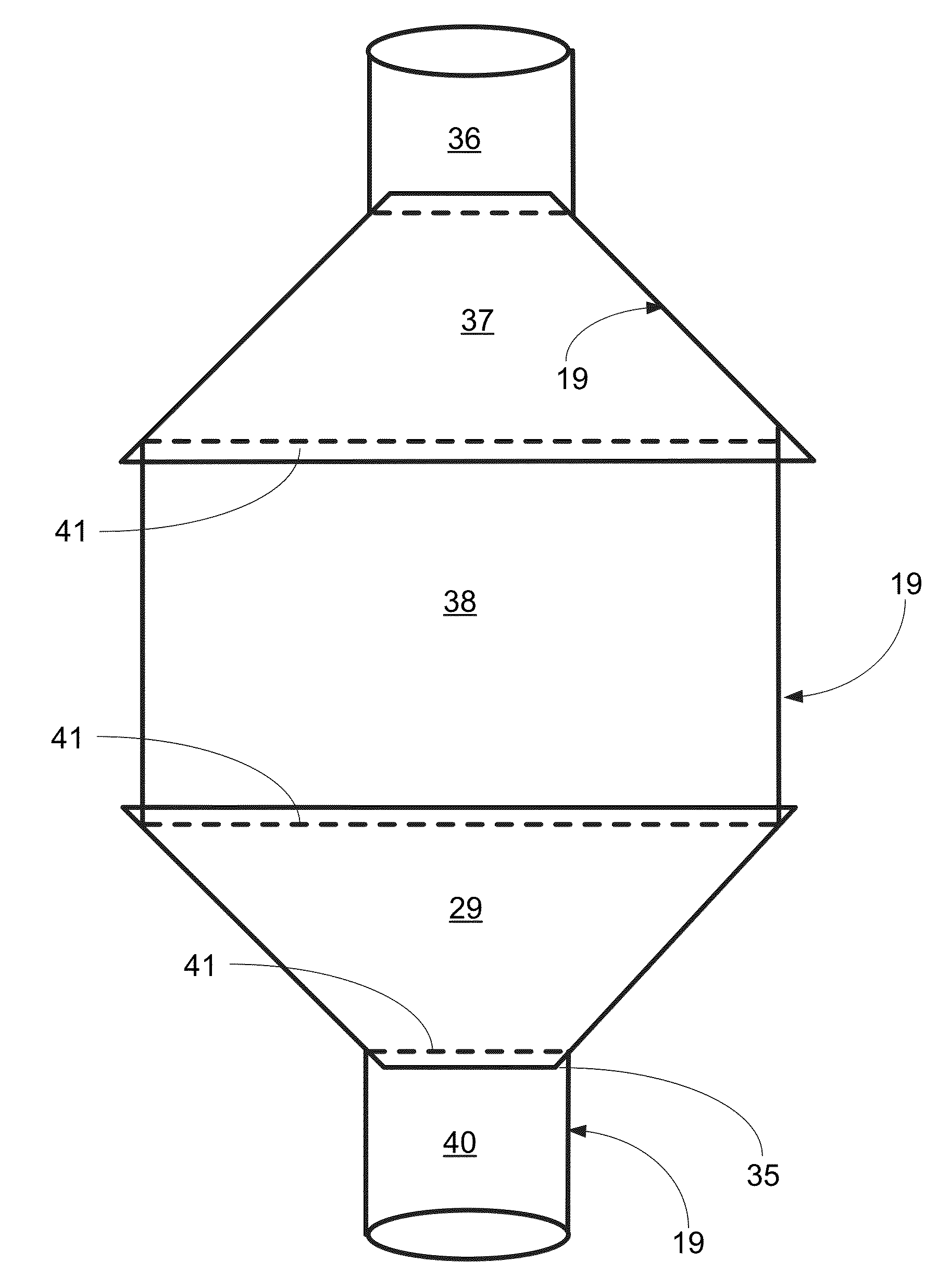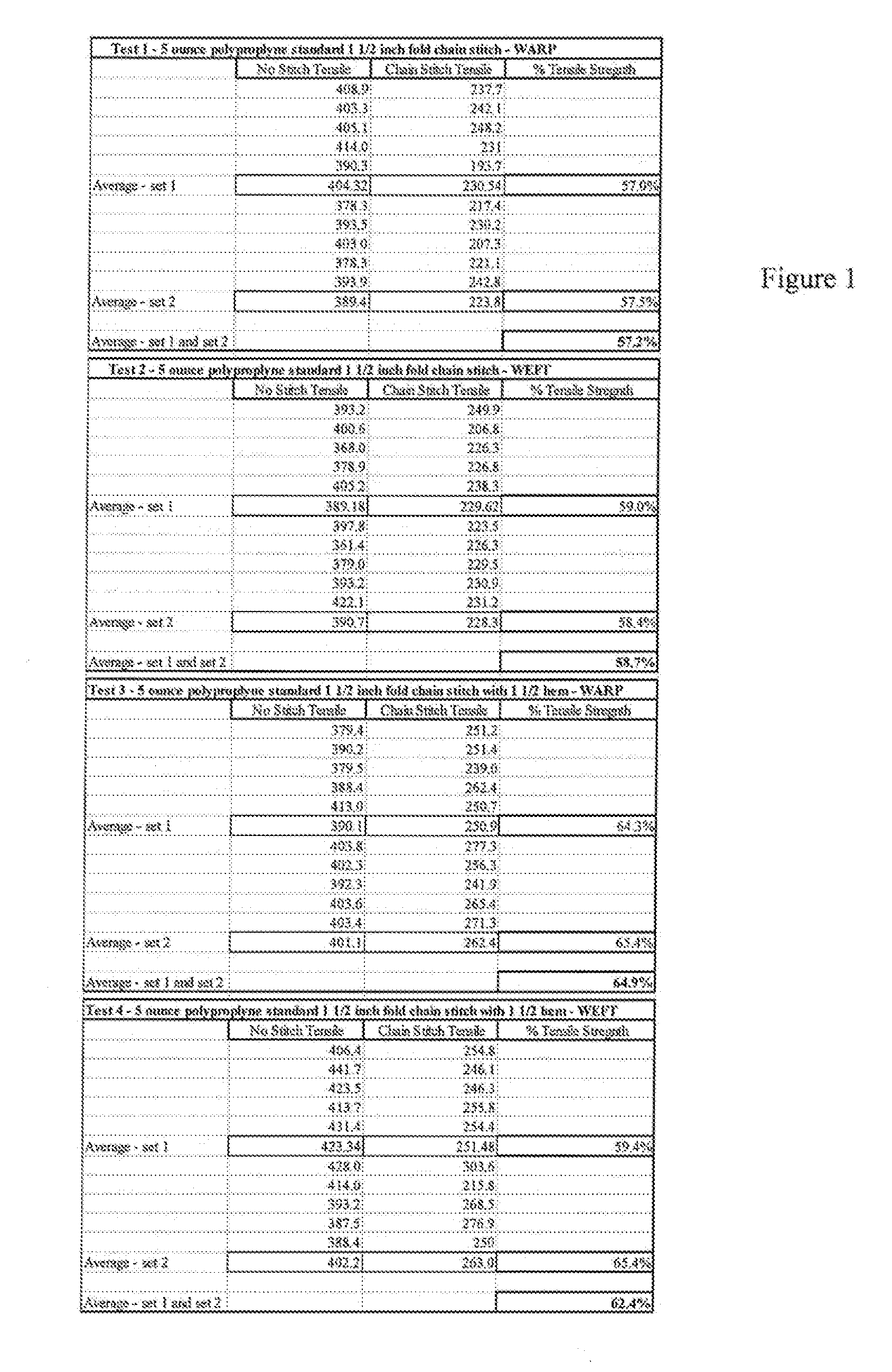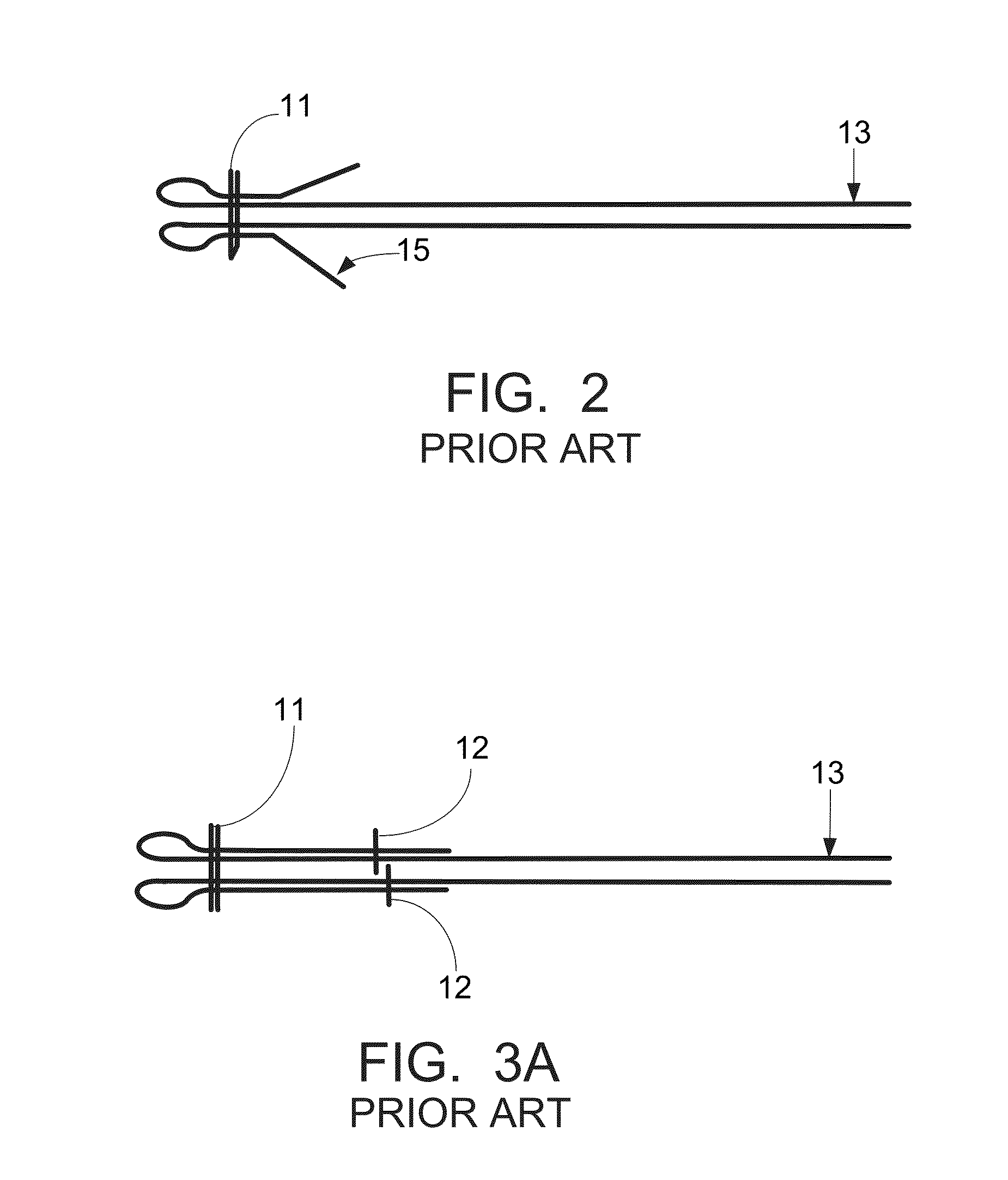Method of production of fabric bags or containers using heat fused seams
a technology of fabric bags and seams, applied in the field of bulk bags, can solve the problems of chemical inertness, find a connection method, reduce notably the strength and usefulness of fabrics, and achieve the effect of low wage labor
- Summary
- Abstract
- Description
- Claims
- Application Information
AI Technical Summary
Benefits of technology
Problems solved by technology
Method used
Image
Examples
example
[0147]In a preferred embodiment of the present invention, the fabrics are only being heated to the melting point of the coating which is lower than the melting point of the fabrics being joined together. In a preferred embodiment of the present invention, the joining temperatures are at least 5 degrees less than the melting point of the polypropylene fabrics to be joined. Different polypropylene fabrics will have different melting points, and in an embodiment of the method of the present invention, the joining temperatures are at least 5 degrees less than the melting point of the particular polypropylene fabrics to be joined. An example polypropylene fabric may have a melting point of 320 degrees Fahrenheit (176.7 degrees Celsius), and thus in an embodiment of the present invention, the coating will be heated to 315 degrees Fahrenheit (157.22 degrees Celsius). By using a lower heat than the polypropylene fabrics, the method of the present invention does not damage or reduce the stre...
PUM
| Property | Measurement | Unit |
|---|---|---|
| Fraction | aaaaa | aaaaa |
| Fraction | aaaaa | aaaaa |
| Length | aaaaa | aaaaa |
Abstract
Description
Claims
Application Information
 Login to View More
Login to View More - R&D
- Intellectual Property
- Life Sciences
- Materials
- Tech Scout
- Unparalleled Data Quality
- Higher Quality Content
- 60% Fewer Hallucinations
Browse by: Latest US Patents, China's latest patents, Technical Efficacy Thesaurus, Application Domain, Technology Topic, Popular Technical Reports.
© 2025 PatSnap. All rights reserved.Legal|Privacy policy|Modern Slavery Act Transparency Statement|Sitemap|About US| Contact US: help@patsnap.com



